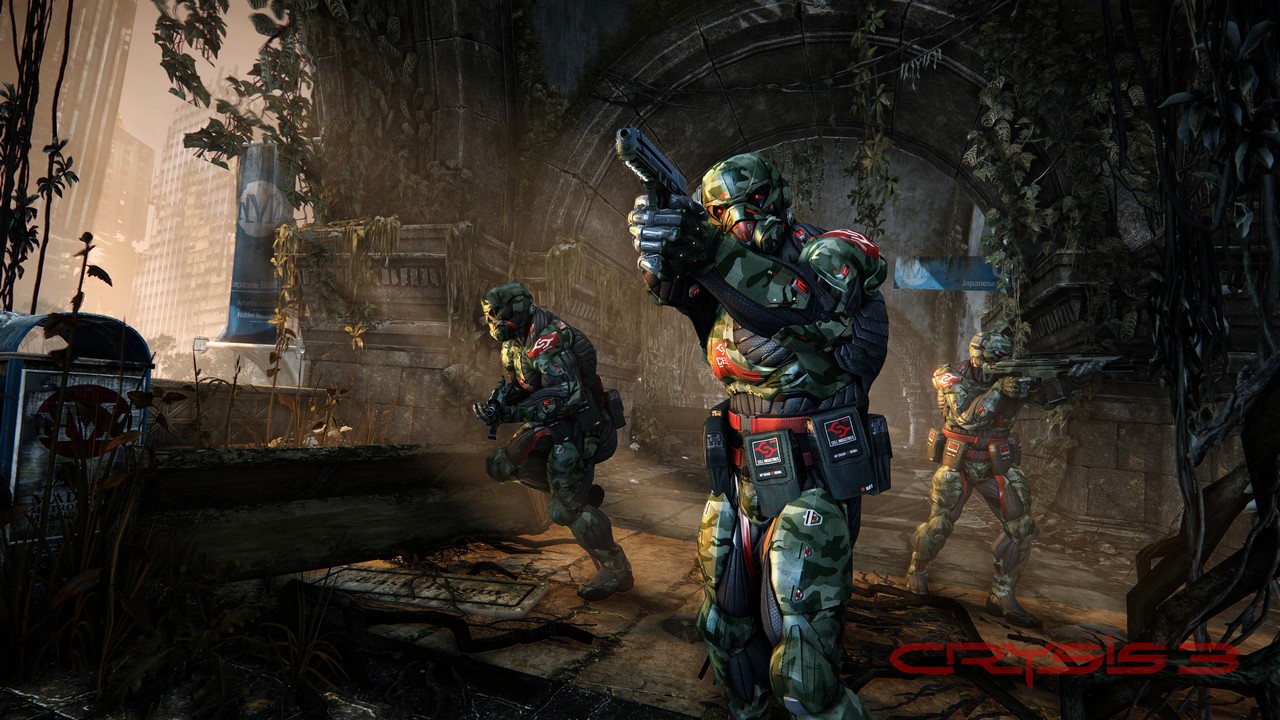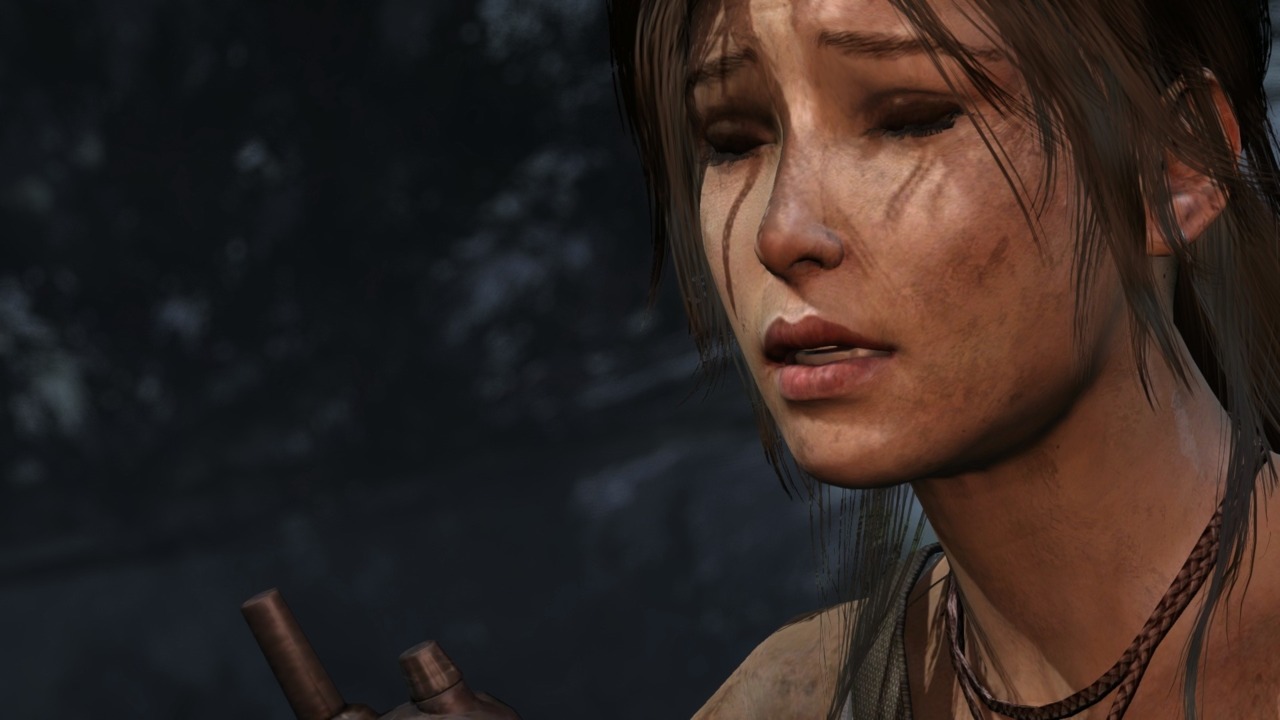Beauty Is in the Eye of the Destroyer
Tom Mc Shea responds to Crytek CEO's comments about the importance of graphics in video games.
"It's always been about graphics driving gameplay." Cevat Yerli's sentiment echoes a belief that many within this industry hold dear. From boardroom executives focused on marketing strategies to forum-goers obsessed with benchmarks, a strong contingent of individuals advocate cutting-edge visuals above all else. Yerli believes that game design evolves when technological improvements are made, forever tying these two aspects together in a harmonious, symbiotic union. And there is some truth behind this philosophy. However, Yerli's evangelistic views have contributed to a blight that has slowly eroded the structural supports that are fundamental to a healthy marketplace. Publishers have pushed all of their chips to the middle of the table, positive that visuals are the main draw of a video game, and their reckless gambling has sent many to the poorhouse.
Yoichi Wada presided over Square Enix during a tumultuous period for the Japanese gaming industry. Console sales have been struggling recently as many people have moved on to the handheld scene, so Square Enix was forced to improvise to appeal to a more Western-focused fan base. And it seemed as if it was headed in the right direction. Sleeping Dogs, Hitman: Absolution, and Tomb Raider have all been released in the last six months, and not only did they resonate with critics, but they made waves at retail as well. With almost 9 million sold between them, they should be the poster children for how to resurrect a struggling company. However, those sales fell so far below the company's expectations that Wada was forced to step down as president. Another casualty in an endless stream of studio closures and executive restructurings.
That Tomb Raider moved more than 3.4 million units and yet still was considered a failure is an absurdity that can no longer be ignored. Budgets have ballooned so dramatically of late that even selling millions of copies may not be enough to recoup investments, and a major reason for the escalating costs is directly related to the increasingly preposterous visual demands. The emphasis on state-of-the-art graphics has forced studios to hire a small army of programmers and artists, and though the result is often breathtakingly gorgeous, the cost of such beauty is too much to bear. Said industry analyst Billy Pidgeon, "For games with development budgets approaching $100 million, to be truly profitable, ratings have to be above 8.5 and sales need to be in the five to ten million unit range."
That Tomb Raider moved more than 3.4 million units and yet still was considered a failure is an absurdity that can no longer be ignored.
It's no surprise that Yerli would proclaim that "making things look spectacular and stylistic is 60% of the game." He runs a company that makes and licenses a high-end engine, after all, so he has a financial stake in raising the bar for visual fidelity. And you can't blame Wada for going along with the latest trend, either. To create a cultural sensation, a game that would make the viewer take notice when it appears in a commercial or on a late-night talk show, you have to make sure first impressions are positive. If Tomb Raider bore the rough, polygonal edges of the 1996 original, it would have looked like an outdated relic, retro to a fault. So Square Enix was forced to sink a fortune into development costs. The end result was a finely tuned, emotionally rich experience that has made its way into the homes of millions of people. Its legacy is a failure so extreme that the president was replaced.
That so many studios have been shuttered or forced to restructure could be seen as inevitable growing pains as the industry goes through a transformation. But the shift that's occurring has had negative reverberations that have severely affected the landscape. Blockbuster games demand an expensive commitment that few publishers can afford. And because the cost of development is so high, and the risk so great, we've seen homogenized experiences that are the antithesis of what publishers need most right now. The only way to offset the rising cost of game development is to attract a larger and more diverse audience. But games have become narrower in focus to minimize the risk of releasing something that doesn't succeed at retail. It's a deadly cycle that has halted the growth of console games at the same time that the mobile and social spaces are gaining in popularity.
The rising cost of game development--which is tied to the graphics evolution that Yerli touts--has forced many studios to abandon AAA releases entirely. Lightbox Interactive, Double Fine Productions, Spicy Horse, and others have packed up their supercomputers to work on mobile, free-to-play, and downloadable games. And though these teams have been able to stay alive by shifting their focus, many others have been closed completely. LucasArts and Junction Point Studios are just two recent examples of developers who are no longer in business. There's a depressing number of people who have lost their jobs in recent years as the industry continually loses money because of the virtual arms race it has entered into.
The rising cost of game development has forced many studios to abandon AAA releases entirely
Sadly, this trend may not be slowing down anytime soon. Ubisoft Montreal CEO Yannis Mallat recently forecast the continued decline of the industry's middle. "On one end of the spectrum you will have all the big, AAA blockbuster games that [offer] more and more production values, more value for the players, but there will be fewer of them taking a bigger chunk of the market," Mallat said. At the other end, he believes, is where mobile and social games will thrive. "The in-between, the belly of the market, is the one that just collapsed in a way and disappeared." Mallat is most likely right in his prediction--recent trends show that this is the case--and that's a worrying sign. Cutting-edge graphics have separated the industry into the haves and the have-nots, and that segregation is only going to be more pronounced as the technological gap between the two extremes widens.
It doesn't matter if Yerli is correct in his assessment of the importance of graphics or not. What is important is that people believe that he is. The industry's reliance on pushing visuals above everything else has become a serious detriment to game design. Inflated budgets have ensured that only the most successful games are able to turn a profit, which means that all the studio closings may not be a trend at all, but a fact of life in today's marketplace. Development teams are going to keep going under until only the most powerful few remain. And if you think games are too similar now, just wait until only a handful of studios are producing all of the high-profile releases. We have to move away from our fascination with expensive visuals if the industry is going to thrive now and in the future.
'Got a news tip or want to contact us directly? Email news@gamespot.com


Join the conversation